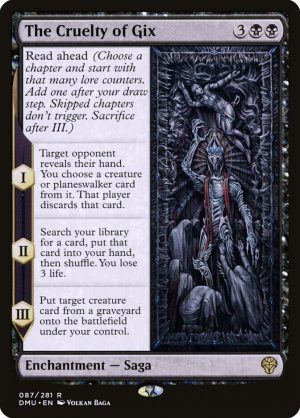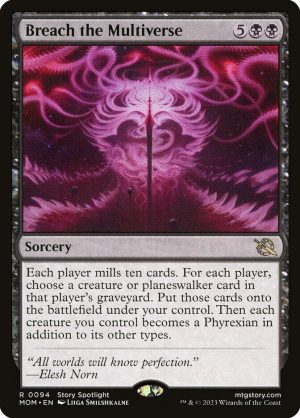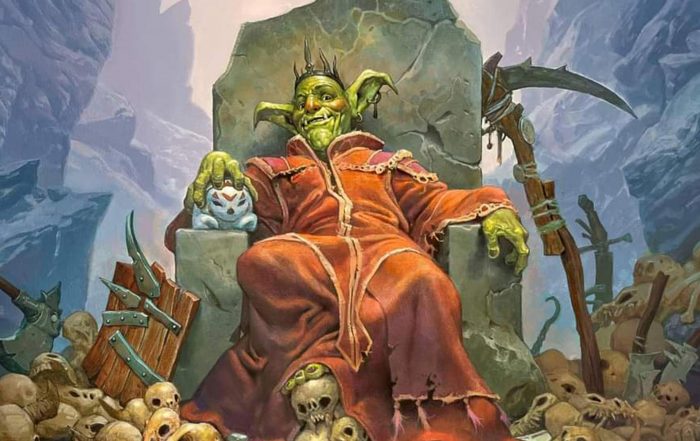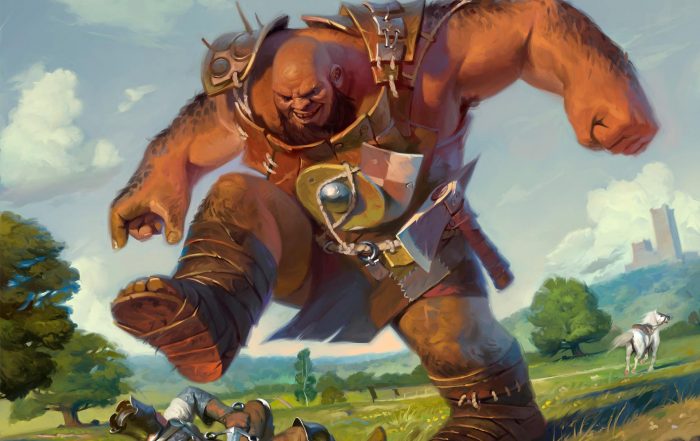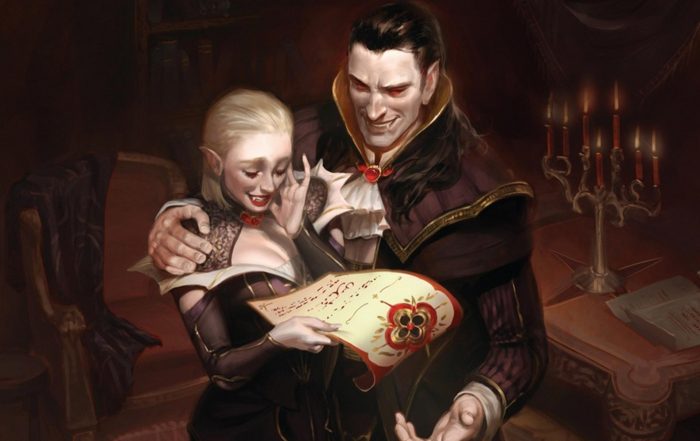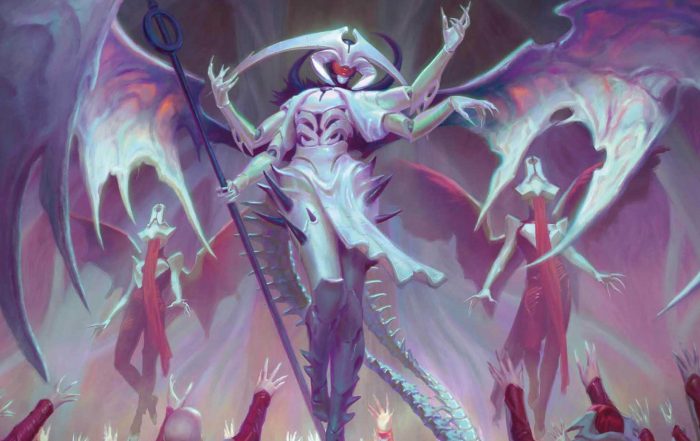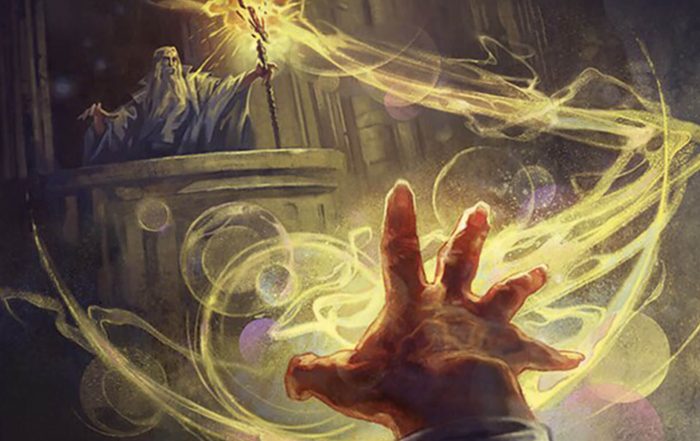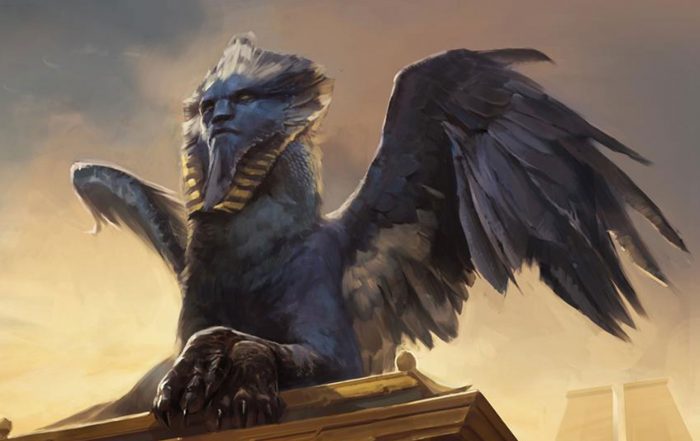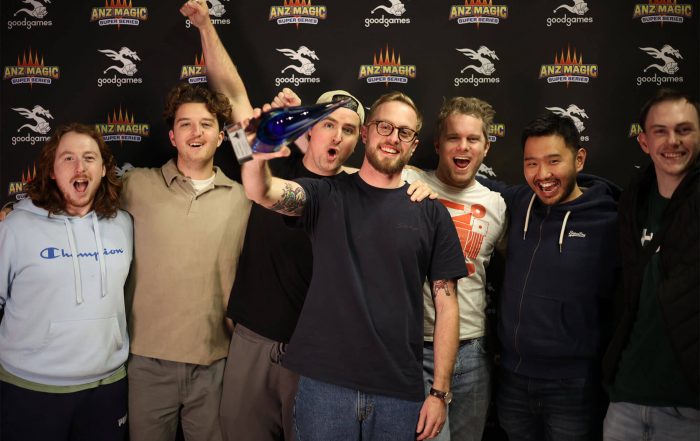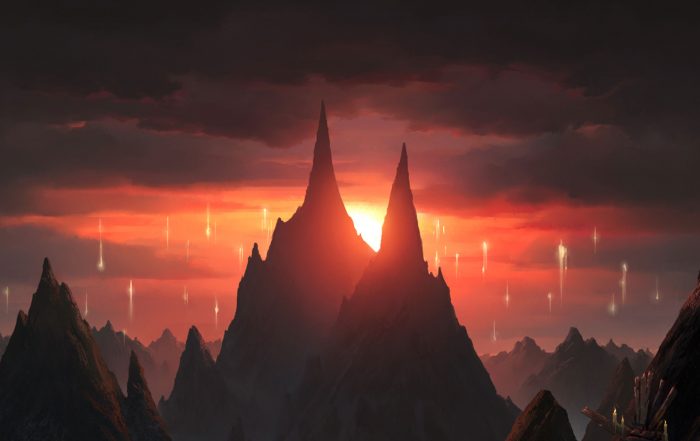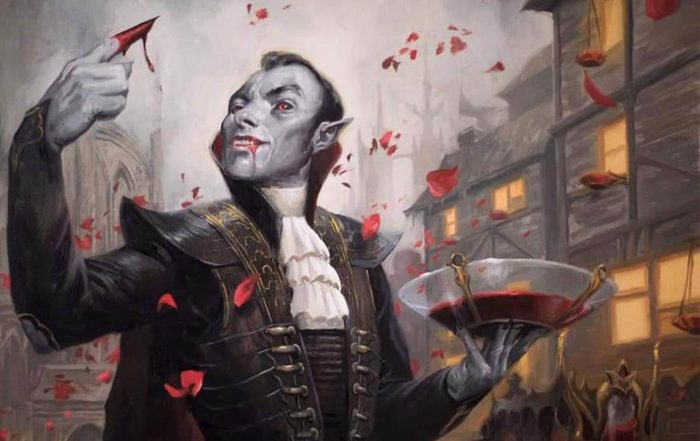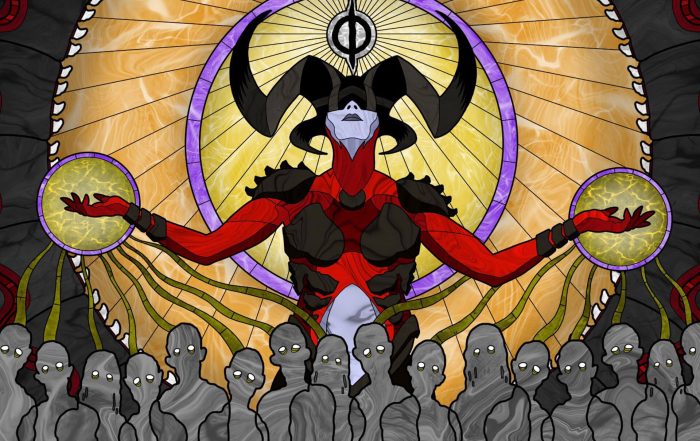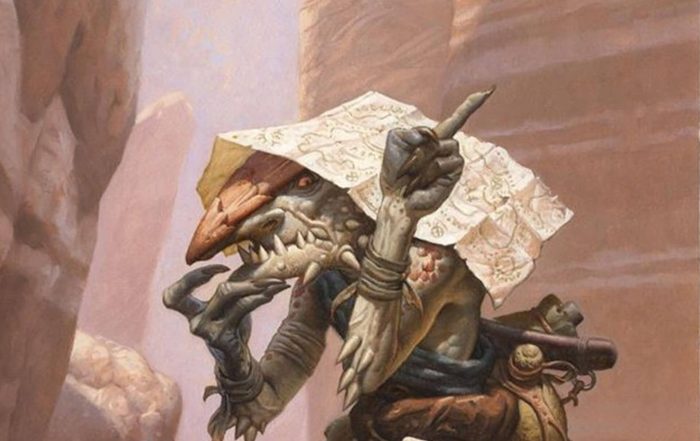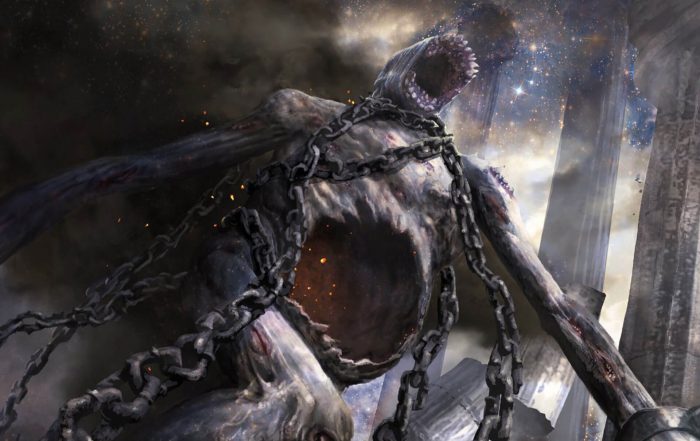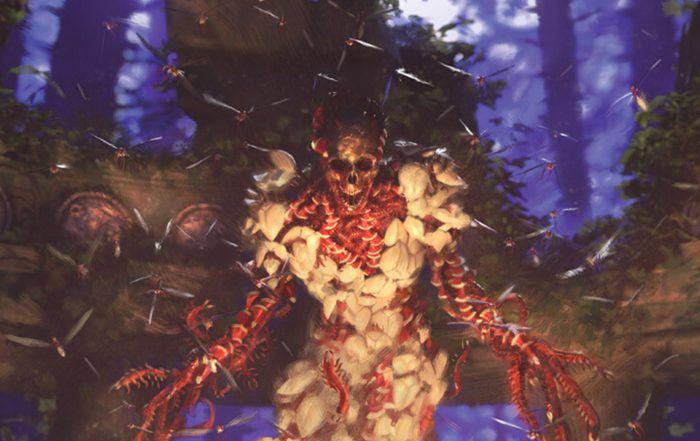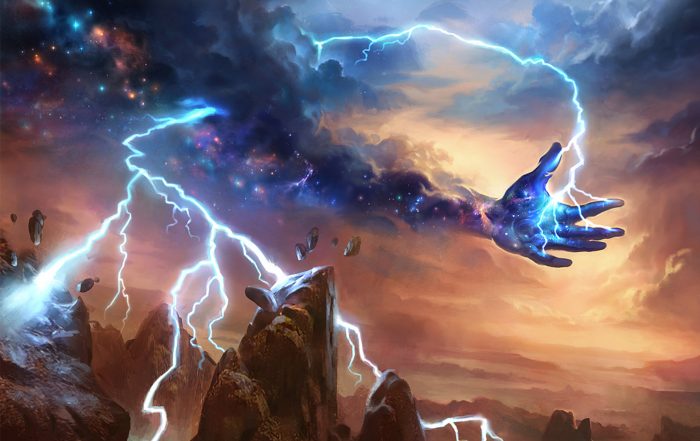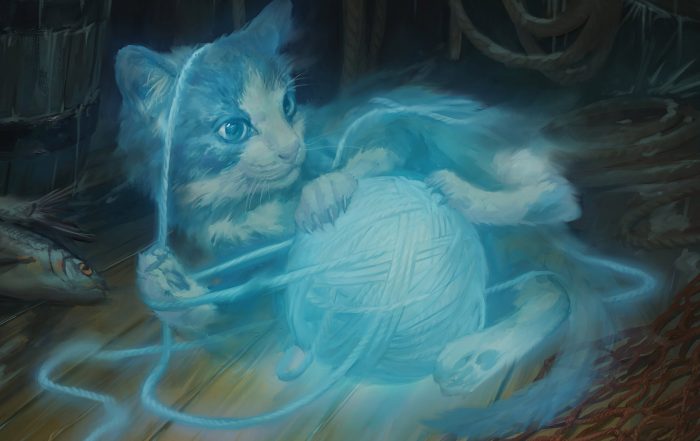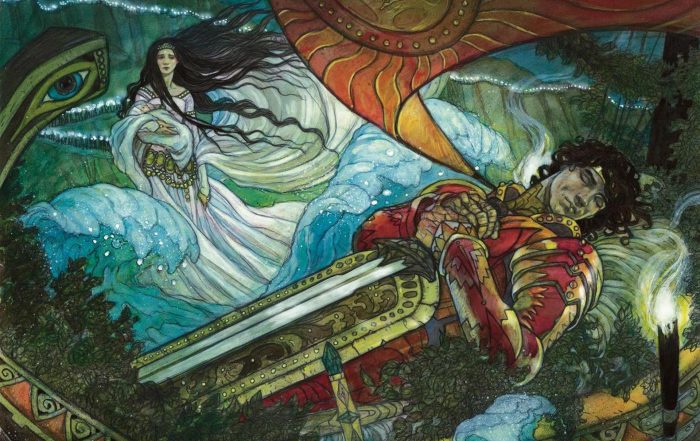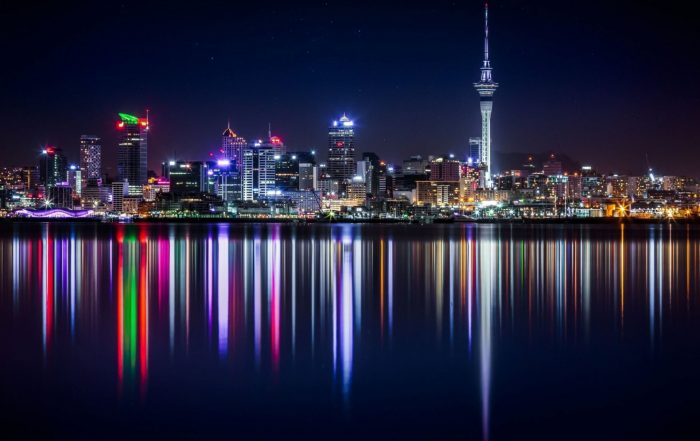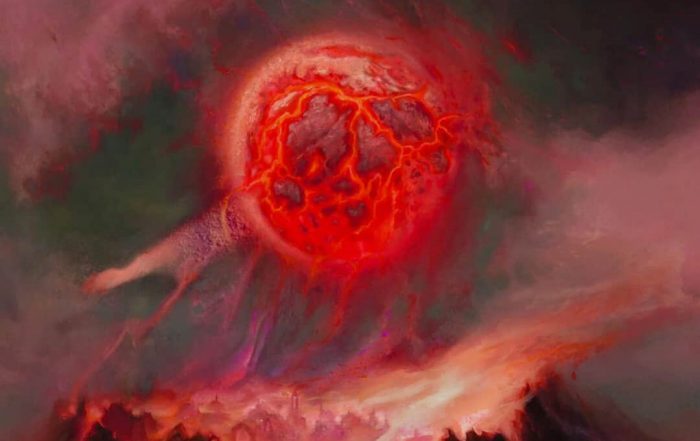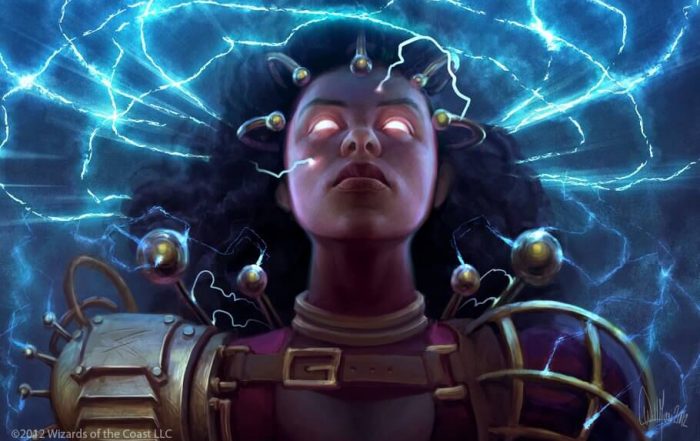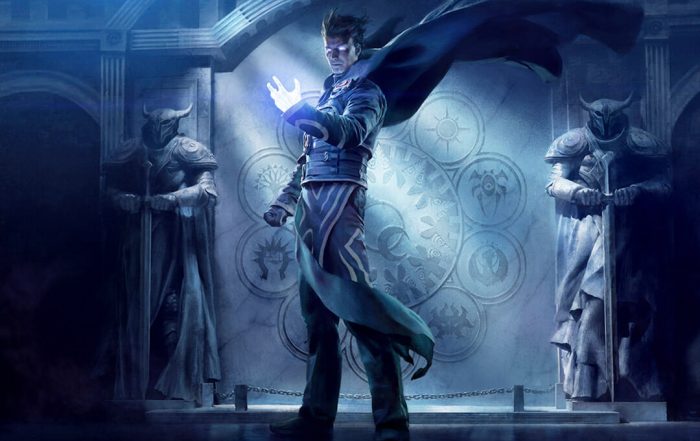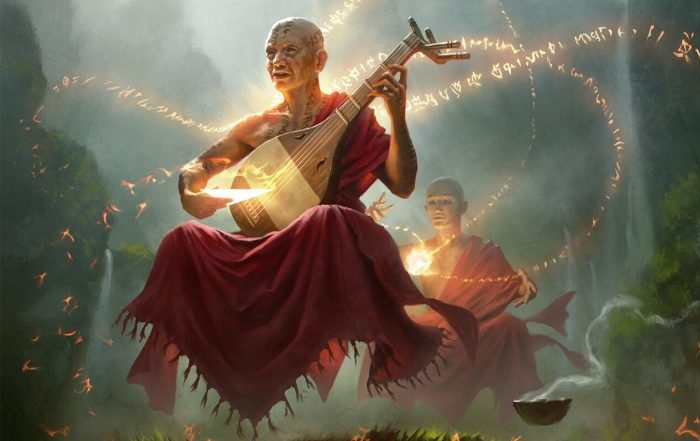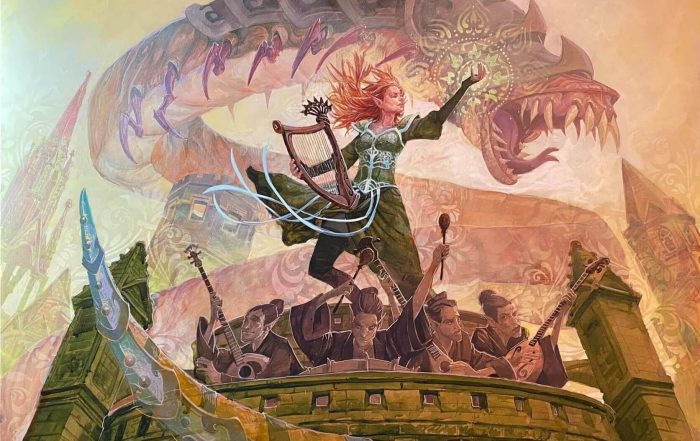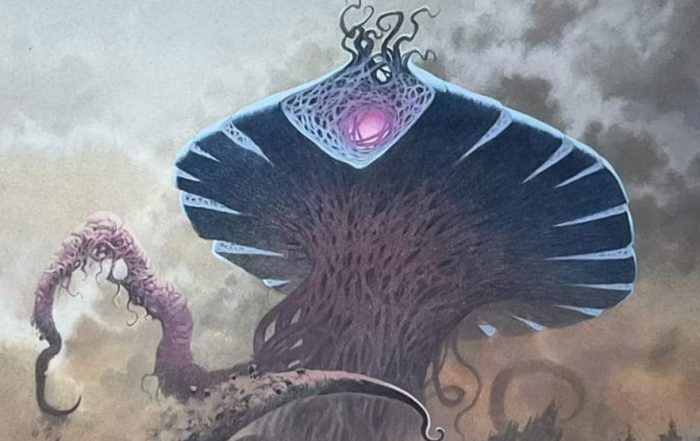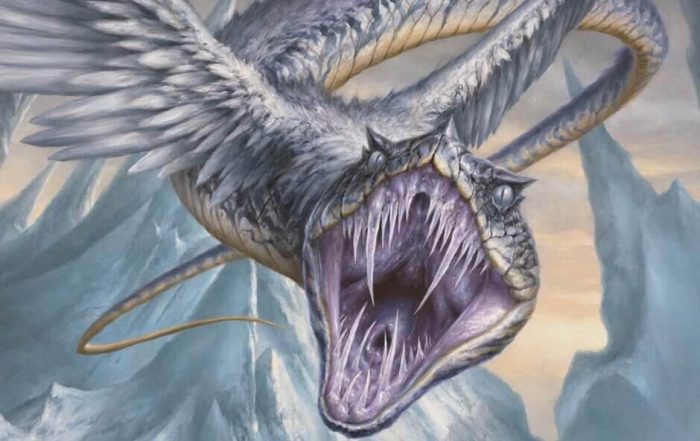Double Rakdos in Standard
Rakdos: Reanimator and Midrange
Midrange PTQ & Reanimator PT
Author: Zen Takahash
Hello everyone!
I have recently returned from Pro Tour March of Machine in Minneapolis, where I finished 8-8 in the main event, losing my final two matches, where a win in either would have re-qualified me for the next Pro Tour. However, this was short lived, as I won the Pro Tour Qualifier (PTQ) on Sunday to qualify for Barcelona! The trip was incredible, and it was fantastic to see all my friends who I hadn’t seen for years and compete in my first Pro Tour in four years since Mythic Championship I in 2019!
I will definitely be writing a tournament report on my preparation and the event itself over the coming weeks, which will be posted right here at Three for One Trading, but for now I thought it would be best to write about the Standard decks I played. I’m sure many of you will be itching to try new decks on Arena or at your local game store!
In this article, I will be going over the two Rakdos decks I played over the weekend – the Rakdos Reanimator deck I submitted for the Pro Tour, and the Rakdos Midrange deck I submitted for the PTQ on Sunday.
Pro Tour Candidate: Rakdos Reanimator
This Reanimator list is what I played at the Pro Tour, where I finished 3-7 in the standard portion.
I beat two Esper Legends and Mono White Control, and lost to three Grixis Midrange, two Esper Legends, Azorius Soldiers and 4C Reanimator.
I think that our deck choice was poor for the event, but my matchups were also quite unfortunate, as I paired against nine decks with counterspells and didn’t play against any Rakdos Midrange, which I believe is a slightly favorable matchup.
As for how I reached this choice, I initially tried various decks in the format, but quickly settled on playing a Rakdos-based midrange deck. I simply felt that Bloodtithe Harvester, Reckoner Bankbuster and Fable of the Mirror-Breaker were too good not to play.
I spent quite some time working on Grixis Midrange and Grixis Sharks (with Chrome Host Seedshark and Tezzeret, Betrayer of Flesh), but ultimately gave up on both decks due to their manabase and their vulnerability to Razorlash Transmogrant. The issue with the Grixis manabase wasn’t the colored sources, but rather, just how many of the lands came into play tapped after turn three with Xander’s Lounge, Blackcleave Cliffs and Darkslick Shores.
These Rakdos-based decks are very mana hungry, even late into the game, and I lost countless games because my seventh or eighth land didn’t come into play untapped after drawing a Bladecoil Serpent off a Reckoner Bankbuster or a Fable of the Mirror-Breaker off an Invoke Despair and not being able to cast them due to a tapped land.
At this point, I was basically set on playing Rakdos Midrange.
The deck felt smooth, and I liked that it had a favorable matchup against creature decks, while also not being that behind against its bad matchups, simply due to the strength of curving Bloodtithe Harvester into Fable of the Mirror-Breaker. However, the one matchup I really struggled against was Mono White Control. It just felt abysmal – the addition of Sunfall and Surge of Salvation made the matchup even more lopsided than it was before.
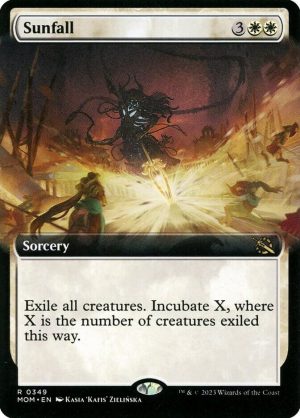
Enemy Number One – Mono White
We quickly found that the Mono White Control list we had in our team was seemingly beating everything. The addition of the two previously mentioned cards made its Rakdos-based matchups much better, while its Esper Legends matchup also improved significantly thanks to the new sweeper.
You used to have to play Depopulate, which was simply a bad card, so the upgrade to Sunfall was massive.
The Reanimator matchup also improved as they moved away from Atraxa, Grand Unifier and opted for Etali, Primal Conqueror instead. Etali often hit blanks from the Mono White deck as it would mill a Lay Down Arms or an Ambitious Farmhand.
However, even though most of us believed that Mono White Control was the best positioned deck, we were all worried about going to time – especially if other teams also recognized that this deck was great and played it, since the mirror was almost impossible to finish within fifty minutes.
I believe this was the biggest mistake we made in our preparation, and it was a tremendously costly one.
Ultimately, Mono White would have been extremely well positioned at the Pro Tour, and I think the list we had was better than what the few Mono White players had at the Pro Tour (though I do think Autumn Burchett’s list was the best – splashing for Duress and Breach the Multiverse was genius).
The deck was also near non-existent in the field, and Domain Control was not very popular either, which was our other worry about playing the deck.
What we should have done was get over our fear about going to time by practicing a lot with the deck, so all the common lines became second nature to us, and then the time factor wouldn’t have mattered as much. But we didn’t take the plunge, and it cost us dearly.
Why Reanimator?

Since we thought Mono White Control was well positioned and others would also recognize that, we wanted to build a Rakdos deck that was good against them.
This is when the team became interested in Reanimator, and a lot of teammates started working on the deck. We were also inspired by Corey Baumeister’s second-place finish in a Magic Online Challenge with the archetype, and the quick improvements we made on his list made us believe that we were onto something promising.
Although most of the team were interested in Reanimator from about two weeks before the Pro Tour, I was still on Rakdos Midrange. However, this changed about a week before the Pro Tour, when Joseph Karani, our resident Rakdos expert and Canadian Regional Championships winner, suggested Phyrexian Fleshgorger.
This was a major breakthrough for us.
Up to this point, we had two Reanimator variants in our testing – an aggressive version which was basically just Rakdos Midrange but with The Cruelty of Gix and Etali, Primal Conqueror over Invoke Despair and Chandra, Hope’s Beacon, and a “bigger” version with more big creatures and cards like Big Score.
The former felt quite disjointed as Invoke Despair was naturally a good follow up to Rakdos Midrange’s early aggression, whereas The Cruelty of Gix didn’t make an immediate impact on the board or pressure your opponent’s life total if you were starting it at chapter one or two. On the other hand, the bigger version felt clunky and didn’t utilize Reckoner Bankbuster as well, as the curve of the deck was higher, and you had fewer ways to reliably crew it.
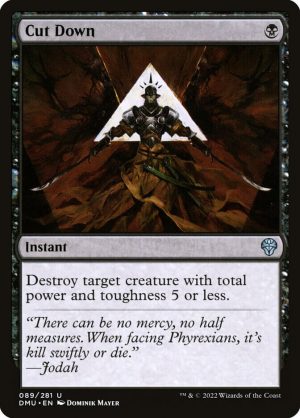
This is where Phyrexian Fleshgorger came in, and many of us viewed it as the perfect “bridge” between the two variants. It was a good creature on turn three as it was decent on both offense and defence, it crewed Reckoner Bankbuster, and it aligned well against the removal in the format as it didn’t die to either Cut Down or Go for the Throat.
It was also a good reanimation target for The Cruelty of Gix, as a 7/5 menace, lifelink creature was a threat in and of itself. This meant we didn’t have to play so many big creatures, which would often get stuck in our hand.
Mistakes Were Made
While this was a great discovery, it was also quite last minute, and I wasn’t sure what to do. I played a set of games against a teammate in the Reanimator mirror, and the deck felt powerful.
Since most of the team were settled on the deck, and no one else was genuinely interested in Rakdos Midrange, I decided to just trust the team and lock in the deck. I figured that my vast experience with playing other Rakdos-based decks would be enough.
As it turned out, this was a huge mistake on my part, as this deck was a lot harder to play than I expected. The Cruelty of Gix is just much more difficult to navigate than a card like Invoke Despair. There were multiple spots at the Pro Tour where I wasn’t sure how to properly play The Cruelty of Gix as all three chapters were viable options, and I think on at least two occasions I could have potentially won the game had I chosen a different chapter.
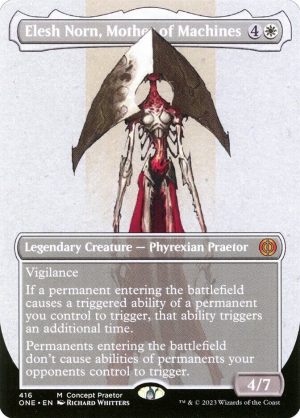
Overall, as mentioned before, I think our choice ended up being poor as Mono White Control wasn’t nearly as popular as we expected. This deck is slightly favored against Rakdos Midrange, but you’re worse off against Esper Legends and Grixis Midrange compared to your Rakdos counterpart, and this was costly as they were both popular at the Pro Tour.
However, the biggest mistakes that were made wasn’t the choice to play Reanimator, but rather, not pursuing Mono White Control more as a team, and my personal mistake of thinking I could pick up Reanimator with minimal practise, as in reality, the deck was a lot harder to play than I expected.
Rakdos Reanimator: Sideboarding
Rakdos Midrange
Esper Midrange
Rakdos Reanimator (Mirror)
Selesnya Toxic
OUT
-2 Atsushi, the Blazing Sky (if they have Wedding Announcement)
PTQ Candidate: Rakdos Midrange
After losing those last two rounds of the Pro Tour, I was eager to try to change my fortunes at the PTQ on Sunday. On Saturday evening, after Day Two of the Pro Tour, we had our team dinner. This is where Joseph suggested we play Rakdos Midrange at the PTQ, but without Graveyard Trespassers.
We simply felt the card was just not good – it trades down to Bloodtithe Harvester, it’s weak against Invoke Despair and it can’t attack through opposing Reckoner Bankbusters. It had always felt like the worst card in the deck, and after talking to a few members of Team Handshake, who had the breakthrough Rakdos Midrange list with four members of their team making the Top 8 of the Pro Tour, they felt similarly about the card and said it was acceptable to cut them.
We thought about playing Phyrexian Fleshgorger, but we expected Abrade to be more popular at the PTQ, as people would be more prepared for the mirror. We therefore decided to play Razorlash Transmogrant in the main deck instead.
The primary reason was that we actually liked the card in the mirror match – although Rakdos plays a lot more basic lands than Grixis, it still comes back for two mana often, and even when it doesn’t, the mirror is so attritional that having a body to bring back later is powerful.
Additionally, with six one-mana interaction spells in the main deck, we felt that on turn three, casting a two-drop creature or drawing off a Reckoner Bankbuster and then casting a one-mana disruption spell was better than tapping out for a Graveyard Trespasser or Phyrexian Fleshgorger.
A card we liked a lot in the sideboard was Breach the Multiverse, which was a good way to go over the top against decks like Reanimator and Mono White Control. Seven mana is a lot, but these matches tend to go long, and Chandra, Hope’s Beacon also helps you ramp into them.
The tournament went really well for me, as I went 6-0-1 in swiss, beating two mirrors, Mono Red, Domain Control, Jeskai Control and Grixis Hidetsugu, before drawing the last round to guarantee a higher seed.
In the quarterfinals, where the winner got the Pro Tour invite (it was awarded to the Top 4), I was paired against Austin Bursavich. He was the person I least wanted to play against, as not only is he a fantastic player (I personally think he’s one of the best players in the world right now), but his list was also well-equipped for the mirror with a full playset of Duress in the main deck.
He also mentioned that he was 6-0 against the mirror in the event so far.
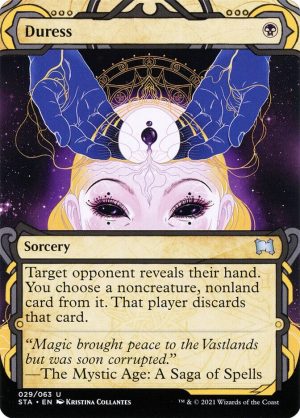
How It Went Down
In the first game, I mulliganed to six, which is quite punishing when you’re on the play in the mirror match, and got swiftly dispatched. However, I managed to come back to win the two post-board games, including topdecking an Abrade on turn two against his Reckoner Bankbuster in the third game, after keeping a hand consisting of three Invoke Despairs, Sheoldred, the Apocalypse, and three lands.
He played Duress on his first turn and took one of my Invoke Despairs, so he played the Bankbuster thinking it would be safe, but I had topdecked one of my two copies of Abrade to severely punish him.
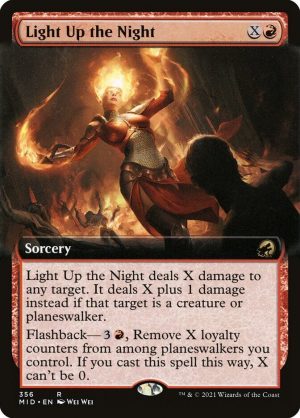
I was very glad to qualify for Barcelona, after the two near-misses the day before. After losing the first game against Austin, I was thinking that I’d lose three shots at the Pro Tour in just one weekend, which would have been rough. I am really looking forward to Pro Tour Barcelona – I love the city and one of my favorite restaurants in the world is there (Cera 23).
Overall, our list for the PTQ was great, and if there was a big standard event tomorrow, I’d play this again, though I would play four Duress in the main deck and try to make room for one Light Up the Night. I thought the card was quite gimmicky and opted not to play it, but after talking to Javier Dominguez about it and seeing how Austin played our match, I realized just how important having that effect is.
Being able to just deal twelve to fourteen damage out of nowhere means you can often “steal” games where you’re behind by just positioning yourself to get in for some chip damage here and there, so you can then put them in that burn range. I noticed in our match that Austin played a lot more aggressively than I did, and it was to put me into that range where I would instantly be dead if he put together the combo.
Rakdos Midrange: Sideboarding
Below is the sideboard guide that Joseph kindly put together for us, and he even printed out a copy and brought it to me on the morning of the PTQ!
Rakdos Midrange
OUT
-3 Cut Down (two on the draw)
Esper Midrange
Rakdos Reanimator
Mono White Control
Mono Red
Grixis Midrange
Selesnya Toxic
Conclusion
I hope you enjoyed this article, as I went over the two main Rakdos variants in Standard right now – Reanimator and Midrange. Personally, I think that Rakdos Midrange is the better choice right now. However, if decks such as Mono White Control and Domain Control increase in popularity due to Rakdos Midrange’s dominance, then I’d recommend Rakdos Reanimator instead.
One thing for sure though is that I highly recommend playing a deck with Bloodtithe Harvester, Reckoner Bankbuster and Fable of the Mirror-Breaker in it.
These three cards simply represent the best turn two and three plays you can be making in this format. Now that Standard is moving to a three-year rotation, I would expect Reckoner Bankbuster and Fable of the Mirror-Breaker would eventually get banned, as I doubt Wizards of the Coast would want these two cards dominating the format for another year. Still, there will be multiple standard events until that happens, so enjoy your time playing these cards while you can!
Till next time!
Zen Takahashi
@mtgzen on Twitter
About the Author
Zen Takahashi is a seasoned writer and mainstay on the Three for One Trading writing team. He is an avid Eternal player from Auckland, New Zealand and enjoys competing in local Legacy events and playing Old School over webcam with friends.
Previously, he was a Silver Pro for multiple years and his results included five Grand Prix Top 8s, a 27th place at Pro Tour Amonkhet, three consecutive online Regional PTQ wins, and he co-created the Modern Dredge deck.
Nowadays though, he primarily plays Legacy, his favorite format, but he also branches out into Pioneer and Modern.

More Articles by Zen Takahashi
AUS/NZ Regional Championship Report – Top 8
Zen qualified for the Pro Tour with Bant Toxic at the Australian/New Zealand Regional Championship! Now here’s all about his tournament experience, the preparation, the team and the many, many deck choices available.
Bant Toxic Guide
Learn all about Bant Toxic in Standard with Zen: The game plan, what hands to keep, how to sequence your turns, tips and tricks, and how to approach each of the major matchups.
Mono Red in Standard
The perfect preparation for our next Store Championship! Zen gives you all the information you need to win in Standard with Mono Red Aggro. As usual he gives you a small run down of the deck together with a lot of different sideboard guides against almost every meta deck of the format.
Rakdos Midrange in Pioneer [Update]
Mistakes have been made and lessons have been learned, so it’s time for an update on Zen’s Rakdos Midrange deck in Pioneer. This time with a very detailed matchup guide on the current Pioneer Meta with sideboard options for each popular deck you’ll encounter.
World Championships 2023 Report
Zen Takahashi is back with a full report of his time during the Magic: The Gathering World Championships 2023 in Las Vegas! Learn everything about his intense preparations, his great team, his tight schedule and tasty dinners.
Rakdos Reanimator Guide [2023]
Zen Takahashi played Rakdos Reanimator at the Magic: The Gathering World Championships in Las Vegas! In his latest article, he goes in-depth about how to play the deck, what to look out for in popular matchups and explains how to make best use of The Cruelty of Gix.
The Lord of the Rings Pro Tour Report
Zen Takahashi is back with another tournament report! This time it's all about Lord of the Rings in Barcelona. In this detailed article, he goes over his draft preparations and the overall fantastic weekend with his team and friends.
Modern Living End Primer
Zen Takahashi played Living End during the Lord of the Rings Pro Tour in Barcelona. Now he's ready to share some insights on this powerful Modern deck including the card choices, what hands to keep and how to sideboard against different opponents.
Regional Championship Report – Sydney
Zen Takahashi played Mono White Humans in Pioneer during the Regional Championships in Sydney! Find out all about what deck he played, what useful tips and tricks he had up his sleeves and how it all went down in his latest article! Bonus insider info on where to get the best truffle pasta in Sydney!
Pro Tour March of the Machine Tournament Report
Zen Takahashi writes about his experience during the Pro Tour in Minneapolis! Here you can read all about what deck he played, his preparation and a full report on the Pro Tour weekend with his team.
Rakdos in Standard
Our author Zen Takahashi competed at the Pro Tour in Minneapolis, shortly before re-qualifying for another Pro Tour. Both times he played Rakdos: Reanimator and Midrange! In his latest article, he compares both experiences and goes over each of the two decks in detail.
Standard Grixis Midrange Primer
Zen won the Australasian Championship with his Standard Grixis Midrange deck a few days ago. Lucky for us, he didn't take a break and wrote an in-depth primer for the deck including sideboard tips and card choices for us! Prepare yourself for future Regional Championships or Qualifiers, because you'll be either playing this deck or playing against it.
Australasian Regional Championships Report
Zen Takahashi won the Australasian Championship and qualified for the Pro Tour and the World Championship! Now we are getting an in-depth look into how he prepared for the tournament and how the games played out in an old-fashioned tournament report.
Boros Burn in Modern
Our author Zen Takahashi is feeling nostalgic, so it was time for a break from Pioneer and time for Modern Burn, Modern Boros Burn, to be precise! As usual Zen gives you a detailed overview of the deck, nice tips and tricks on how to maneuver it around the Modern meta decks and a useful sideboarding options, based on his experience.
Rakdos Midrange in Pioneer
Zen Takahashi is not done with Pioneer yet! For the Regional Championschip in Sydney, he and his team of over 10 other players tested different decks extensively until they came up with their own twist on the popular Rakdos Midrange deck.
Mono White Humans in Pioneer
Zen Takahashi takes a closer look at his newest favorite deck in Pioneer: Mono White Humans! As usual, you can expect in-depth tips and tricks as well as a sideboard guide from Zen, who was already very successful with his Pioneer decks in his Regional Championship Qualifiers.
Best Cards in Modern – Multicolor [2022]
We asked our seasoned team of authors a tough question: What do they think are the best ten multicolored cards in Magic the Gathering's Modern format. We then went a step further and created a Top 5. Learn what they think about the very best cards of one of the game's most popular formats.
Best Cards in Modern – Lands [2022]
We asked our seasoned team of authors a tough question: What do they think are the best ten lands in Magic the Gathering's Modern format. We then went a step further and created a Top 5. Learn what they think about the very best cards of one of the game's most popular formats.
Best Cards in Modern – Artifacts [2022]
We asked our seasoned team of authors a tough question: What do they think are the best ten artifacts in Magic the Gathering's Modern format. We then went a step further and created a Top 5. Learn what they think about the very best cards of one of the game's most popular formats.
Mono Red Primer for Pioneer
This time, Zen Takahashi writes in depth about his Regional Championship Qualifier Deck: Mono Red in Pioneer! That means we get a Primer for Mono Red Burn and Mono Red Frenzy. He also doesn't spare any details about key matchups in Pioneer and helps you to play your way around them!
Mono Blue Spirits in Pioneer
Zen Takahashi can't get enough of Pioneer, which means we have another great Pioneer Primer for you: Mono Blue Spirits! Read all about mulligans, sideboarding and most importantly: How to sequence your turns.
Best Cards in Modern – White [2022]
We asked our seasoned team of authors a tough question: What do they think are the best ten white cards in Magic the Gathering's Modern format. We then went a step further and created a Top 5. Learn what they think about the very best cards of one of the game's most popular formats.
How to Build Mono Red in Pioneer
After the success of his Blue-Red Ensoul article, Zen is back with another Pioneer primer: Mono Red! In his latest work, he excessively tested Devotion, Wizard and Burn decks. You can find all his discoveries and recommendations right here:
Legacy Reanimator 2022
If you are looking for a Reanimator Primer in Legacy, look no further! In his article, Zen Takahashi gives you everything you need to know about Reanimator: Which hands to keep? What are your opponents playing? How to sideboard? All these questions and more will be answered right here.
Blue-Red Ensoul in Pioneer
After a longer break, our author Zen Takahashi is excited to get back into Pioneer and crush the first PTQ season with his version of Izzet Ensoul. You can read all about the new and old decklist as well as mulligan strategies and other tips right here!
Best Cards in Modern – Green [2022]
We asked our seasoned team of authors a tough question: What do they think are the best ten green cards in Magic the Gathering's Modern format. We then went a step further and created a Top 5. Learn what they think about the very best cards of one of the game's most popular formats.
Auckland Eternal Weekend Report
Our author, Zen Takahashi, spent an Eternal Weekend in Auckland where he played tournaments of Vintage, Old School and Legacy. Real Power Nine, no proxies allowed! You can read all about what decks he played and how it went right here on our blog!
Best Cards in Modern – Red [2022]
We asked our seasoned team of authors a tough question: What do they think are the best ten red cards in Magic the Gathering's Modern format. We then went a step further and created a Top 5. Learn what they think about the very best cards of one of the game's most popular formats.
Top Ten Decks in Legacy 2022
In our latest article, Zen Takahashi analyses the best Legacy decks and comes up with his Top 10 Legacy decks of 2022. If you are curious to find out if your deck made the cut, or simply interested in what's going on in Legacy these days, keep on reading right here!
Best Cards in Modern – Black [2022]
We asked our seasoned team of authors a tough question: What do they think are the best ten black cards in Magic the Gathering's Modern format. We then went a step further and created a top 5. Learn what they think about the very best cards of one of the game's most popular formats.
Rainbow Dredge in Modern
Today’s article is all about Dredge in Magic: The Gathering, more specifically, Dredge in Modern. Zen Takahashi, one of the creators of Rainbow Dredge, took a look at the history of the deck and its current state in the meta. He’s also going over different iterations of the deck, as well as all the current sideboard options available.
Best Cards in Modern – Blue [2022]
We asked our seasoned team of authors a tough question: What do they think are the best ten blue cards in Magic the Gathering's Modern format. We then went a step further and created a top 5. Learn what they think about the very best cards of one of the game's most popular formats.
Blue Zenith in Legacy
Zen takes a look at a new deck that did surprisingly well in recent Legacy online events. Green Sun's Zenith and blue Counterspells are the engine in this midrange powerhouse.
Deck Spotlight Modern: Golgari Yawgmoth
Zen takes us to a wonderful world full of creatures, combos and one ofs in the Magic the Gathering Modern format. Chord of Calling is the name of the game. Let's go!
Deck Spotlight Legacy: UW Omni-Tell
Zen talks about one of his favorite decks for paper Legacy: Blue-White Show and Tell Omniscience combo. The best thing about it: It does not need a single card from the restriced list!
Bant Miracles in Post-Modern Horizons 2 Legacy
Zen Takahashi shares his thoughts about his favorite Legacy Deck – Bant Miracles in a Post-Modern Horizons 2 world. He explains which cards he added from the new set and how matchups have changed.
